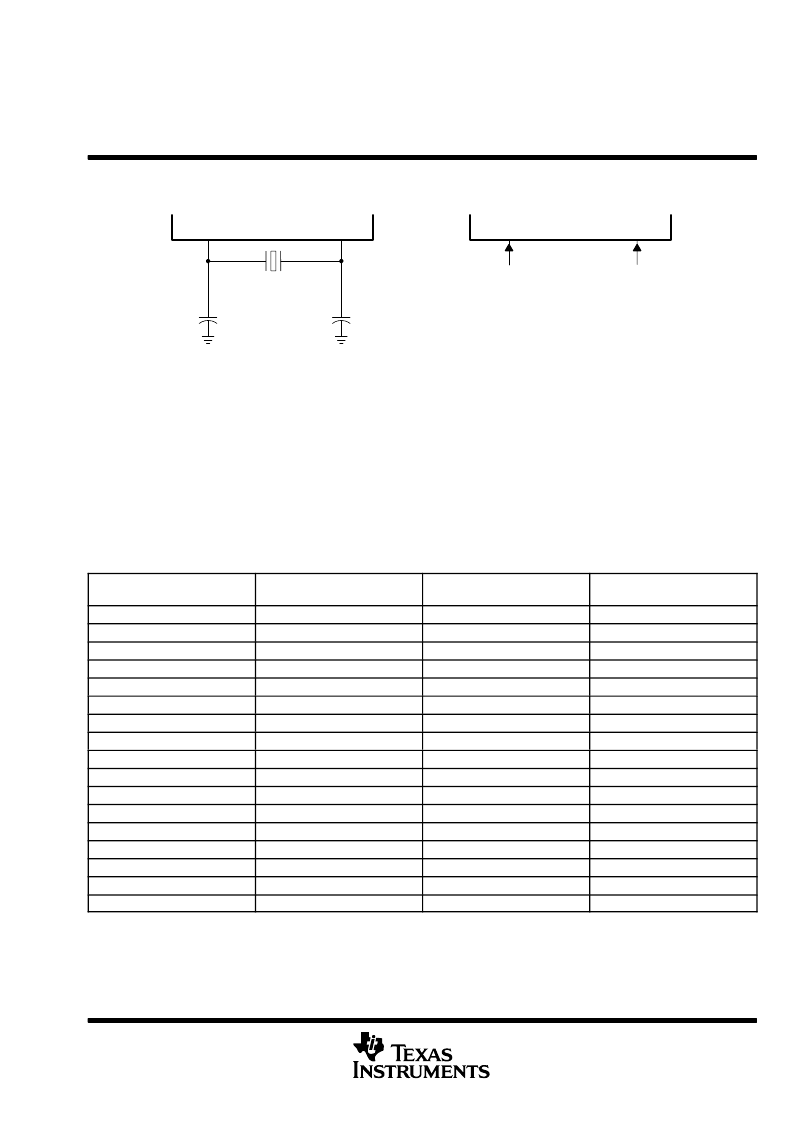- 您現(xiàn)在的位置:買賣IC網(wǎng) > PDF目錄361947 > TMP320LC2401APZS (Texas Instruments, Inc.) DSP CONTROLLERS PDF資料下載
參數(shù)資料
| 型號(hào): | TMP320LC2401APZS |
| 廠商: | Texas Instruments, Inc. |
| 元件分類: | 數(shù)字信號(hào)處理 |
| 英文描述: | DSP CONTROLLERS |
| 中文描述: | DSP控制器 |
| 文件頁(yè)數(shù): | 59/134頁(yè) |
| 文件大小: | 1759K |
| 代理商: | TMP320LC2401APZS |
第1頁(yè)第2頁(yè)第3頁(yè)第4頁(yè)第5頁(yè)第6頁(yè)第7頁(yè)第8頁(yè)第9頁(yè)第10頁(yè)第11頁(yè)第12頁(yè)第13頁(yè)第14頁(yè)第15頁(yè)第16頁(yè)第17頁(yè)第18頁(yè)第19頁(yè)第20頁(yè)第21頁(yè)第22頁(yè)第23頁(yè)第24頁(yè)第25頁(yè)第26頁(yè)第27頁(yè)第28頁(yè)第29頁(yè)第30頁(yè)第31頁(yè)第32頁(yè)第33頁(yè)第34頁(yè)第35頁(yè)第36頁(yè)第37頁(yè)第38頁(yè)第39頁(yè)第40頁(yè)第41頁(yè)第42頁(yè)第43頁(yè)第44頁(yè)第45頁(yè)第46頁(yè)第47頁(yè)第48頁(yè)第49頁(yè)第50頁(yè)第51頁(yè)第52頁(yè)第53頁(yè)第54頁(yè)第55頁(yè)第56頁(yè)第57頁(yè)第58頁(yè)當(dāng)前第59頁(yè)第60頁(yè)第61頁(yè)第62頁(yè)第63頁(yè)第64頁(yè)第65頁(yè)第66頁(yè)第67頁(yè)第68頁(yè)第69頁(yè)第70頁(yè)第71頁(yè)第72頁(yè)第73頁(yè)第74頁(yè)第75頁(yè)第76頁(yè)第77頁(yè)第78頁(yè)第79頁(yè)第80頁(yè)第81頁(yè)第82頁(yè)第83頁(yè)第84頁(yè)第85頁(yè)第86頁(yè)第87頁(yè)第88頁(yè)第89頁(yè)第90頁(yè)第91頁(yè)第92頁(yè)第93頁(yè)第94頁(yè)第95頁(yè)第96頁(yè)第97頁(yè)第98頁(yè)第99頁(yè)第100頁(yè)第101頁(yè)第102頁(yè)第103頁(yè)第104頁(yè)第105頁(yè)第106頁(yè)第107頁(yè)第108頁(yè)第109頁(yè)第110頁(yè)第111頁(yè)第112頁(yè)第113頁(yè)第114頁(yè)第115頁(yè)第116頁(yè)第117頁(yè)第118頁(yè)第119頁(yè)第120頁(yè)第121頁(yè)第122頁(yè)第123頁(yè)第124頁(yè)第125頁(yè)第126頁(yè)第127頁(yè)第128頁(yè)第129頁(yè)第130頁(yè)第131頁(yè)第132頁(yè)第133頁(yè)第134頁(yè)

TMS320LF2407A,TMS320LF2406A,TMS320LF2403A,TMS320LF2402A
TMS320LC2406A,TMS320LC2404A,TMS320LC2403A,TMS320LC2402A
DSP CONTROLLERS
SPRS145K
JULY 2000
REVISED AUGUST 2005
59
POST OFFICE BOX 1443
HOUSTON, TEXAS 77251
1443
external reference oscillator clock option (continued)
External Clock Signal
(Toggling 0
3.3 V)
C
b1
(see Note A)
XTAL2
XTAL1/CLKIN
XTAL1/CLKIN
XTAL2
Crystal
C
b2
(see Note A)
(a)
(b)
NC
NOTE A: TI recommends that customers have the resonator/crystal vendor characterize the operation of their device with the DSP chip. The
resonator/crystal vendor has the equipment and expertise to tune the tank circuit. The vendor can also advise the customer regarding
the proper tank component values that will ensure start-up and stability over the entire operating range.
Figure 17. Recommended Crystal/Clock Connection
loop filter
The PLL module uses an external loop filter circuit for jitter minimization. The components for the loop filter
circuit are R1, C1, and C2. The capacitors (C1 and C2) must be non-polarized. This loop filter circuit is connected
between the PLLF and PLLF2 pins (see Figure 16). For examples of component values of R1, C1, and C2 at
a specified oscillator frequency (XTAL1), see Table 10.
Table 10. Loop Filter Component Values With Damping Factor = 2.0
XTAL1/CLKIN FREQUENCY
(MHz)
R1 (
) (
±
5% TOLERANCE)
C1 (
μ
F) (
±
20% TOLERANCE)
C2 (
μ
F) (
±
20% TOLERANCE)
4
4.7
3.9
0.082
5
5.6
2.7
0.056
6
6.8
1.8
0.039
7
8.2
1.5
0.033
8
9.1
1
0.022
9
10
0.82
0.015
10
11
0.68
0.015
11
12
0.56
0.012
12
13
0.47
0.01
13
15
0.39
0.0082
14
15
0.33
0.0068
15
16
0.33
0.0068
16
18
0.27
0.0056
17
18
0.22
0.0047
18
20
0.22
0.0047
19
22
0.18
0.0039
20
24
0.15
0.0033
low-power modes
The 240xA has an IDLE instruction. When executed, the IDLE instruction stops the clocks to all circuits in the
CPU, but the clock output from the CPU continues to run. With this instruction, the CPU clocks can be shut down
to save power while the peripherals (clocked with CLKOUT) continue to run. The CPU exits the IDLE state if
it is reset, or, if it receives an interrupt request.
相關(guān)PDF資料 |
PDF描述 |
|---|---|
| 5082-7661-CG400 | 7.6 mm (0.3 inch)/10.9 mm (0.43 inch) Seven Segment Displays |
| 74ACT823LMQB | 9-Bit D Flip-Flop |
| 50E-2C-38.0 | TRANS PREBIASED PNP 200MW SOT23 |
| 500E-3CL-5.5 | E Rated Medium Voltage Fuses |
| 500E-3C-5.5 | E Rated Medium Voltage Fuses |
相關(guān)代理商/技術(shù)參數(shù) |
參數(shù)描述 |
|---|---|
| TMP320LC2401AVFA | 制造商:TI 制造商全稱:Texas Instruments 功能描述:DSP CONTROLLERS |
| TMP320LC2401AVFS | 制造商:TI 制造商全稱:Texas Instruments 功能描述:DSP CONTROLLERS |
| TMP320LC2402APAGA | 制造商:未知廠家 制造商全稱:未知廠家 功能描述:DSP|16-BIT|CMOS|TQFP|64PIN|PLASTIC |
| TMP320LC2402APAGS | 制造商:未知廠家 制造商全稱:未知廠家 功能描述:DSP|16-BIT|CMOS|TQFP|64PIN|PLASTIC |
| TMP320LC2402APGA | 制造商:未知廠家 制造商全稱:未知廠家 功能描述:DSP|16-BIT|CMOS|QFP|64PIN|PLASTIC |
發(fā)布緊急采購(gòu),3分鐘左右您將得到回復(fù)。